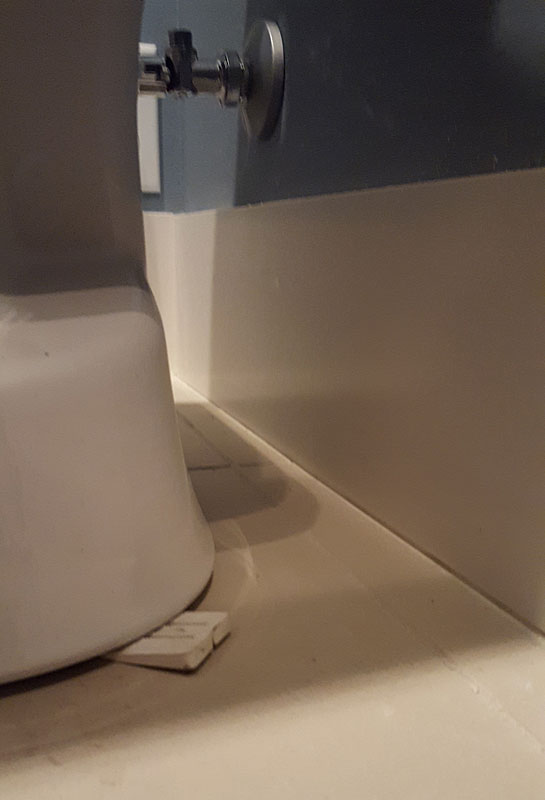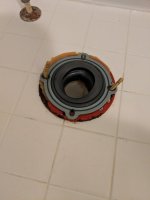Plumber'sSon
New Member
- Messages
- 22
- Reaction score
- 0
- Points
- 1
It is rather a generic question, sorry if it was discussed earlier.
I am installing a Toto Drake II and discovered that it wobbles a lot.
First of all it was surprising as the previous Toto Drake I installed few months ago but had to replace because of a leak in the bowl did not rock that much. It seemed to have very good contact with the floor and I used only one shim to level it.
The new toilet after I leveled it has big gaps. In details: there is a contact with the floor on one side next to the bolt. I used a pretty thick shim on the back for leveling and a slim one on the front to prevent rocking. I was able to put one shim on the other side next to the bolt to both level an stabilize the toilet. Now that size has a big gap between the toilet and the floor.
I wonder if I did something wrong here.
If it is supposed to be this way I wonder if I should put more shims in the gap to increase the contact area and spread the pressure more evenly. What kind of shims is preferable? Is EZ-Johny good?
I am installing a Toto Drake II and discovered that it wobbles a lot.
First of all it was surprising as the previous Toto Drake I installed few months ago but had to replace because of a leak in the bowl did not rock that much. It seemed to have very good contact with the floor and I used only one shim to level it.
The new toilet after I leveled it has big gaps. In details: there is a contact with the floor on one side next to the bolt. I used a pretty thick shim on the back for leveling and a slim one on the front to prevent rocking. I was able to put one shim on the other side next to the bolt to both level an stabilize the toilet. Now that size has a big gap between the toilet and the floor.
I wonder if I did something wrong here.
If it is supposed to be this way I wonder if I should put more shims in the gap to increase the contact area and spread the pressure more evenly. What kind of shims is preferable? Is EZ-Johny good?


